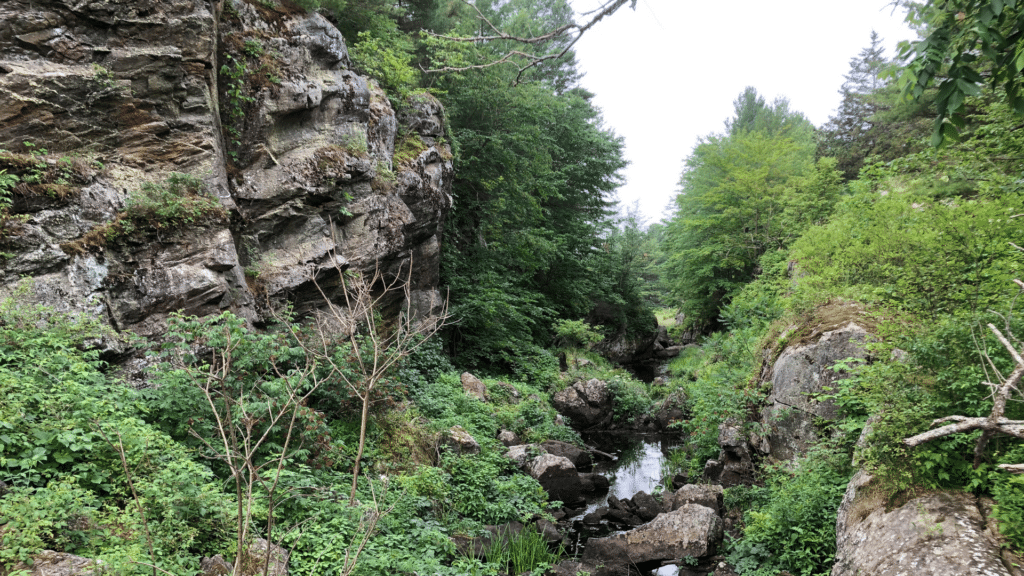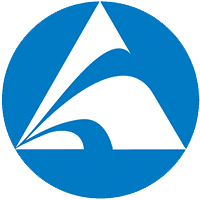Park Guide
Our Info
- info@friendsoffrontenac.com
- 6700 Salmon Lake Road, Sydenham, ON K0H 2T0
- Google Map
- What3Words
Explore Below

Our Location
Frontenac Provincial Park is situated in Southern Ontario about 40 km (25 miles) north of the historical city of Kingston. Kingston is located on Lake Ontario just west of the Thousand Islands and is approximately half way between Montréal and Toronto.
GPS coodinates for the Park Office :
44.50475401139791, -76.55524493591956
Driving Instructions, The Old Fashioned Way
Hiking Trails
The map below is from the Park Tabloid, and gives an overview of the trails. We highly recommend you purchase a proper park map, available from the park office or on-line here.
NOTE: Trail lengths below are for the loop itself and do not include hiking in and out of the loop.
- Blue Tetsmine Lake Loop, 10km
- Orange Gibson Lake Loop, 9km
- Forest Green Hemlock Lake Loop, 5km
- Red Little Clear Lake Loop, 7km
- Purple Big Salmon Lake Loop, 17km
- Brown Little Salmon Lake Loop, 10km
- Yellow Arkon Lake Loop, 11km
- Light Green Cedar Lake Loop, 14km
- Light Blue Slide Lake Loop, 21km
- Grey Doe Lake Trail, 3km
- Chocolate Brown Arab Lake Gorge Trail, 1.5km
- Dedication trail, 2.5km
- Corridor Trail, 7.7 km
- Bufflehead trail, 6.5 km
Fishing
Power ice augers, chainsaws, generators, ATV’s and snowmobiles are not permitted in Frontenac Park.
Trailside and shore fires are not permitted.
Licenses: An Ontario Resident, Canadian Resident or Non Resident angling license is required and kept on your person at all times while fishing. You must show this license when asked by a warden.
The gathering and collection of frogs, turtles and baitfish is illegal in Provincial Parks.
For information on Provincial fishing regulations, go to www.ontario.ca/fishing.
CLICK HERE for Ontario Fishing Regulations Summary- Zone 18 Seasons and Limits To obtain an Ontario Fishing License: or Outdoors Card renewal call: Outdoors Card Centre at 1-800-387-7011 (must wait 21 days for delivery.). for a temporary license and Outdoors Card:
www.ontario.ca/outdoorscard.
Frequently Asked Questions
Summer: 8am-6pm, 7 days per week.
Fall: 8am-6pm, on Fridays and Saturdays, and
8am-4:30pm, from Sunday to Thursday.
Winter: 8:30am – 4pm, 7 days a week.
Yes, for day use of Frontenac Park, you must purchase a Daily Vehicle Permit as follows:
Day Use
Regular…. $15.50
Senior….. $12.50
Disabled…. $7.75
Ontario Parks Seasonal Permits (tax not included):
Summer Vehicle Permit……$75.00 (April 1-Nov 30)
Winter Vehicle Permit……$60 (Dec 1-March 31)
Annual Vehicle Permit……$99.00 (Jan 1-Dec 31)
Note: Seasonal Permits enable a vehicle and its occupants to enter any Ontario Provincial Park
for day use. All day users, including those with a Season’s Pass, must register for a Daily Vehicle Permit.
Yes and No.
Frontenac Park is a Natural Environment park; it is very rugged. This is a backcountry camping park with the campsites only accessible via canoe, kayak or hiking. Frontenac has a web of hiking and portage trails that are all connected; however, they are in their natural environment, making it impossible for a wheelchair to pass through.
However, the pathway from the parking lot is stone dust and passable with a wheelchair. The park office itself and washroom facilities are at ground level and are accessible.
The Park Office contains many artifacts and taxidermied animals which can be quite interesting to visit. Depending on the type of wheelchair, one can travel down Big Salmon Lake road all the way to Big Salmon Lake dock which is approximately 4 km in distance from the office.
In Frontenac, campsites are scattered over the Park area. The Park has 16 campsite locations.
Some are in clusters, others are single sites. Each campsite sports a tent pad, a firepit and a
picnic table. Each cluster includes a privy. Checkout our campsites page for more info.
Current Ontario Parks fees information can be found here: https://www.ontarioparks.com/en
Yes. Reservations can be made year-round at Frontenac over the phone (1-888-668-7275) or online at Ontario Parks Reservation System
You can park in multiple lots in the park. Parking facilities are provided adjacent to the Park Office year-round. Vehicle access to the Big Salmon Lake and Arab Lake lots is only available from late April to late October, since Salmon Lake Road is closed between those dates.
Once you have obtained your permit, you must park your vehicle at an official parking lot prior to embarking on your trip. If you have the correct license plate number identified on your daily vehicle reservation, there is no need to leave a copy of your valid permit on your vehicle’s dashboard.
The following guidelines are based on consideration for the park environment and other
park users:
Hike only marked routes. Do not leave the trail.
Protect all trees and plants. Never strip bark from trees or pick flowers or plants.
Protect all wildlife. Do not harm animals or birds.
Keep your dog on a leash at all times while in the park.
Light fires only in designated campsite fireplaces. The use of portable stoves is encouraged if
cookouts are planned in the interior.
Do not rinse soap (even biodegradable kinds which need soil to break down) into water bodies. When washing dishes, etc., remove water from the lake or stream and dispose of soapy water away from the waterbody.
Camp only at designated campsites, for which you are registered. Do not clear your own site.
Fireworks and firearms are prohibited within Frontenac Provincial Park.
Do not litter. Carry out what you bring in.
A water cairn with treated water is located at the Park Office. To be safe, untreated water from the interior lakes and streams should be boiled at a rolling boil for a minimum of 1 minute prior to consumption. (It can also be filtered and treated with purification chemicals.) The evening meal is an ideal time to boil the next day’s water for drinking.
In the interior of the Park, help is not close at hand. This is all the more reason to exercise
caution at all times. A good quality first aid kit is a must while traveling in the Park’s interior.
Mobile phone service is not reliable in the Park area. However, there is a cell phone booster located in the Self-Serve Station in case of an emergency.
A satellite communication device such as a SPOT, Garmin In-reach, or Zoleo is highly recommended.
We also recommend you download the What3Words App ahead of your visit. If you need to call for help, this App will show exactly where you are and three words that are unique to that location.


